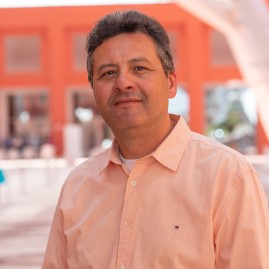Towards a Sustainable Management of Mine Wastes: Reprocessing, Reuse, Revalorization and Repository, 3rd Edition
A special issue of Minerals (ISSN 2075-163X). This special issue belongs to the section "Mineral Processing and Extractive Metallurgy".
Deadline for manuscript submissions: 15 July 2024 | Viewed by 905
Special Issue Editors
Interests: sustainable mining; circular economy; mine waste repurposing; resource recovery; critical raw materials; industrial ecology
Special Issues, Collections and Topics in MDPI journals
Interests: environmental geochemistry and the mineralogical characterization of mine ores and waste; stabilization/solidification of contaminated soils and mine wastes
Special Issues, Collections and Topics in MDPI journals
Interests: mineral processing; geometallurgy; environmental desulphurization; integrated mine waste management; critical raw materials
Special Issues, Collections and Topics in MDPI journals
Interests: inorganic industrial and mining wastes; environmental characterization; treatment and recycling of industrial and mining wastes; waste reprocessing; integrated management of mining wastes
Special Issues, Collections and Topics in MDPI journals
Special Issue Information
Dear Colleagues,
The rising demand for sustainable solutions in the management of solid mine wastes has necessitated the creation of a third Special Issue, building upon the accomplishments of its predecessors. This edition seeks to propel the discourse on mine waste management, addressing the growing challenges and opportunities in this dynamic field. These wastes, characterized by substantial quantities, often pose significant management challenges and potential environmental threats.
Our exploration will persist in identifying innovative strategies that align with environmental conservation and facilitate the extraction of future generations of resources from mineral wastes. The overarching theme centres on the evolution towards a circular economy, prioritizing resource recovery and sustainable practices. We invite contributions on the following key topics:
- Holistic problem solving: this issue aims to delve into comprehensive discussions that address the persistent challenges associated with solid mineral wastes, unravelling the complexities involved in their sustainable management;
- Cutting-edge characterization techniques: building on the foundations of prior editions, the third instalment of this Special Issue will showcase state-of-the-art methods for finely characterizing industrial and mine wastes, offering a profound understanding of their composition and potential applications;
- Innovative technical and environmental solutions: presenting the latest advancements, this Special Issue will spotlight techniques and technologies that efficiently manage these wastes, encompassing treatment and processing before disposal;
- The recovery of critical raw materials: with a focus on effective, cost-efficient, and eco-friendly methods, this Special Issue will explore avenues to maximize the extraction of critical raw materials from industrial and mining wastes;
- Expanding recycling horizons: beyond traditional sectors, this issue aims to explore novel applications and sectors for recycling industrial and mining wastes, contributing significantly to the development of a circular economy;
- Diversifying valorisation approaches: delving into the valorisation of these wastes across various sectors, this Special Issue seeks to broaden the spectrum of possibilities for transforming waste into valuable resources;
- Scale studies and practical applications: continuing the tradition of the previous editions, this issue will feature laboratory, pilot, and/or industrial-scale studies, providing valuable insights into the real-world applications of the discussed techniques;
- The life cycle assessment of comprehensive solutions: recognizing the need for a holistic approach, contributions focusing on the life cycle assessment of entire solutions are highly encouraged, providing a more thorough understanding of the environmental impact and sustainability of the proposed strategies.
Dr. Yassine Taha
Dr. Abdellatif Elghali
Dr. Yassine Ait-Khouia
Prof. Dr. Mostafa Benzaazoua
Guest Editors
Manuscript Submission Information
Manuscripts should be submitted online at www.mdpi.com by registering and logging in to this website. Once you are registered, click here to go to the submission form. Manuscripts can be submitted until the deadline. All submissions that pass pre-check are peer-reviewed. Accepted papers will be published continuously in the journal (as soon as accepted) and will be listed together on the special issue website. Research articles, review articles as well as short communications are invited. For planned papers, a title and short abstract (about 100 words) can be sent to the Editorial Office for announcement on this website.
Submitted manuscripts should not have been published previously, nor be under consideration for publication elsewhere (except conference proceedings papers). All manuscripts are thoroughly refereed through a single-blind peer-review process. A guide for authors and other relevant information for submission of manuscripts is available on the Instructions for Authors page. Minerals is an international peer-reviewed open access monthly journal published by MDPI.
Please visit the Instructions for Authors page before submitting a manuscript. The Article Processing Charge (APC) for publication in this open access journal is 2400 CHF (Swiss Francs). Submitted papers should be well formatted and use good English. Authors may use MDPI's English editing service prior to publication or during author revisions.
Keywords
- inorganic industrial and mining wastes
- environmental characterization
- treatment, stabilization, reprocessing, and recycling
- integrated management
- valorisation








